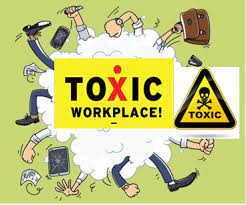
Who you attract isn’t determined by what you want. It’s determined by who you are. – John Maxwell
In part one of this two-part series, I introduced you to a working definition of what a toxic workplace culture is and introduced you to the leader’s role in addressing it.
A toxic workplace environment was defined as “a workplace where a negative atmosphere caused by coworkers, supervisors, and/or the company culture, makes it difficult to work or progress in a job.” Perhaps you can identify with this working definition. In fact, 87% of those surveyed for the study said that they worked in such an environment.
The leader’s role in reversing a toxic workplace environment begins with two things: 1) The leader defines the workplace culture. In other words, the type of culture you want is determined by who you are. You can’t expect to have great workplace culture if you, as the leader, do not possess the character and integrity to create it. You define the culture by who you are. 2) The leader must defend the culture. It’s not enough to define the culture you want, you must defend it. This means everyone in leadership is clear on what it is and everyone sets the example of what it looks like and you hold everyone accountable for it.
As stated in part one, many CEOs and CFOs acknowledge the benefits of a healthy workplace environment but do not know where to start when it comes to fixing it. I addressed a starting place in part one, so let’s continue with a few next steps that can turn the tide.
Don’t assume everyone knows or understands the culture
It would stand to reason that your values and culture are an integral part of your onboarding process. If it’s not, it should be. But that aside, you must build upon it. Your culture and environment are always evolving. At every opportunity, remind your people that they represent the culture and the health of the organization.
Everyone is held accountable
Patrick Lencioni says, “Great teams do not hold back from one another. They are unafraid to air their dirty laundry. They admit their mistakes, their weaknesses, and their concerns without fear of reprisal.”
And this must be the guiding philosophy of your organization if you want it to be healthy. If all your people do is bottle up their frustrations and concerns and never speak up, even though that employee is an otherwise ideal team member, they are inadvertently contributing to the toxic culture. Your people must take ownership of the culture they want and it begins with mutual accountability. Click To Tweet
Regularly employ T.L.C.
The benchmarks of a strong workplace culture that will cause it to thrive are found in three basic ingredients:
- Trust – The foundation of your workplace culture is trust. When your people trust each other (and you), the sky is the limit in terms of what you can accomplish. Without it, you will always be stuck.
- Loyalty – Loyalty to one another – built on trust, is the glue that holds everything together in your organization. Guard and protect this with everything you have.
- Communication – Nothing will undo a strong workplace culture any faster than a lack of good communication. Your people do not want to be left in the dark. If you can’t properly communicate then how can your people trust you or be loyal?
By no means have I exhausted all there is to say about toxic workplace cultures. But I trust that these two posts have opened your eyes and understanding to the possibilities of what can be done to turn it around in your organization.
©2023 Doug Dickerson
- Read more about employee engagement and workplace culture in my book: Employee Engagement – Click here to order my book on Amazon
- For more information about employee engagement and workplace culture workshops, email me at: [email protected]










